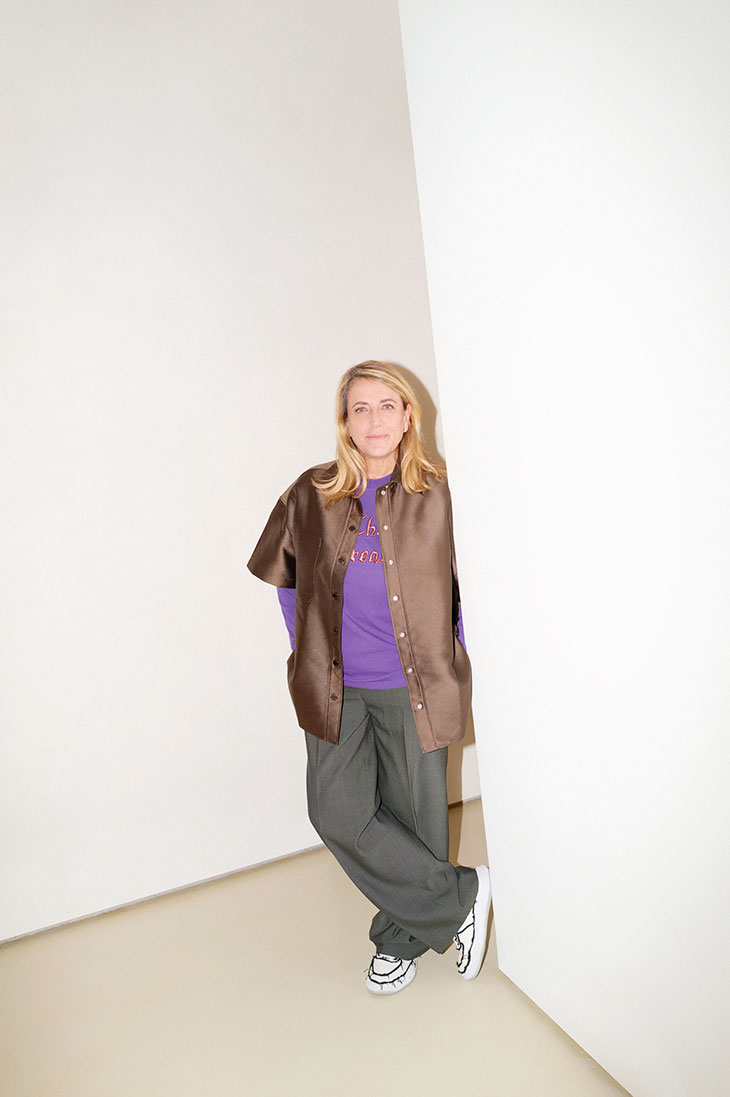
Patricia Urquiola, celebrated architect and product designer, renowned for her eclectic approach, brought her unique experimental style to Milan Design Week, transforming the Moroso showroom in Brera. As one of the leading representatives of contemporary design eclecticism, Urquiola has created a multitude of sensory-rich designs for leading houses such as Cassina, Kartell, Foscarini, and Moroso. Her work spans a wide array of products including tiles, furniture, lighting, fabrics, and rugs, each piece embodying her signature blend of aesthetic innovation and functional depth.
LIMITED COPIES LEFT – ORDER IN PRINT and DIGITAL
In a discussion with DSCENE Magazine editors Katarina Doric and Zarko Davinic at the Moroso showroom, Patricia Urquiola talks about the concepts behind the vibrant redesign and the dynamic light setup that revitalized the space, new furniture pieces with Moroso but also AI and film. This interview not only highlighted her creative process but also emphasized the collaborative spirit and personal history that influence her designs. Throughout the conversation, Urquiola shared insights into how Milan Design Week serves as a catalyst for her creativity, shaping her approach to design and inspiring her continuous exploration of materials and forms in the pursuit of sustainability and innovation.
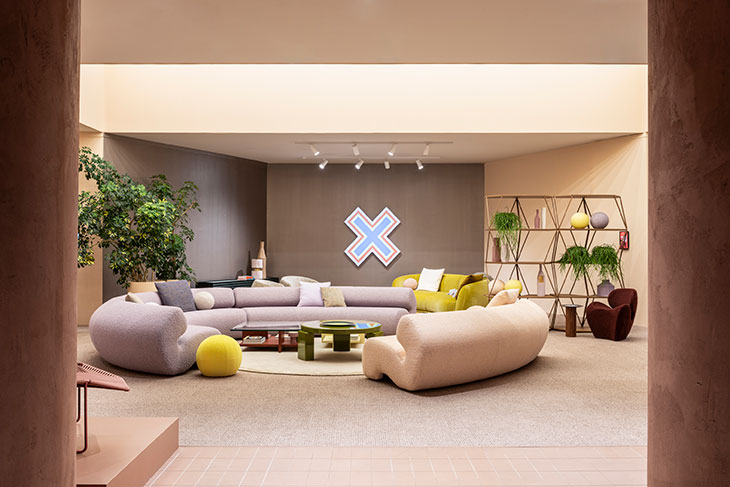
It’s wonderful to see how you’ve transformed the Moroso showroom here in Brera. The light setup and the vibrant colors really bring a unique energy to the space. – Oh, it’s fantastic to be here and discuss this transformation. Previously, we had light just on the sides, which created a very different atmosphere. Now, with the energy the new setup brings, it feels like the entire space is evolving in a beautiful way. We’re very comfortable with the colors we’ve chosen—it feels like they really represent us as a team. Interestingly, some of my team members are long-time friends, and there’s a shared history that enriches our collaboration, making this space a product of both our professional and personal journeys.
This is the beauty of design: something created spontaneously for a specific moment can evolve into something timeless and desired by many.
The installations here are quite striking. Do you envision these as permanent fixtures for Moroso, or are they intended as temporary artistic statements for Milan Design Week? – These installations began as spontaneous creations—really, just from a need to articulate something fresh and engaging without overthinking. As for the future, we’re discussing possibly making them limited editions, although we need to figure out the logistics of that. It reminds me of Charlotte Perriand’s table, which was originally not intended for production but ended up being embraced by the public years later. This is the beauty of design: something created spontaneously for a specific moment can evolve into something timeless and desired by many.
View this post on Instagram
So I guess that’s also how often you work with Patrizia Morosso since you’ve known each other for such a long time. It’s an occasion for thinking in a very nice way. – You know, as for the fabrics we’ve created for the new collection of sofas, here, you understand, this is a study on printing with new, sustainable machines that print without chemical additives. They first print a kind of white base so that all the colors can adhere even to very light fabrics. And I think we take those chenilles—a type of velour, very deep, that is normally so traditional. And then we treat them roughly, you know? This results in a very modern look, which I think is quite interesting. Then we did an exploration with Patrizia; I was conducting the exploration and I said, “Do you want us to do this for yours?” And we did it at the same time.
Your work often involves a playful yet thoughtful exploration of materials and form. How do you balance innovation with functionality in your designs? – Innovation in my studio often starts from a very intuitive place. For instance, the new sofa designs evolved from a piece we created 20 years ago. It was about pushing the design further, making it more ‘groovy’ and engaging. We’re always looking to add fun and a natural touch to our work, ensuring each piece not only fills a space but complements it in engaging ways. This process is like a conversation, evolving fluidly and organically.
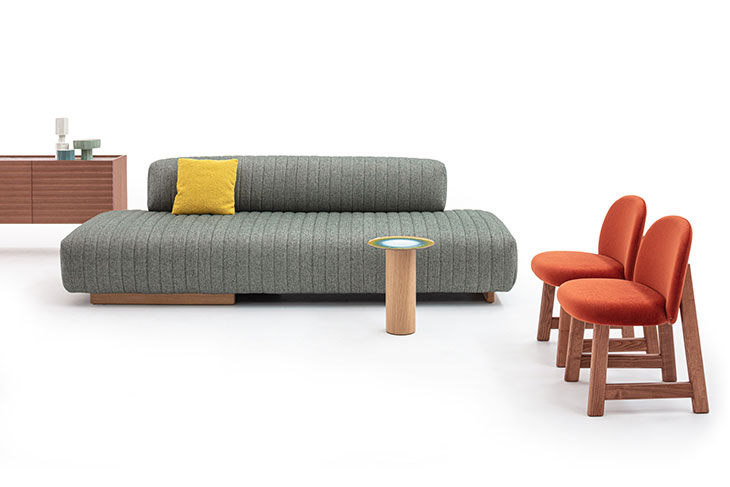
Is it the easiest for you to work with Patrizia Morosso? – Yes, absolutely yes. We are also good playmates. Not easy, very easy.
Speaking of evolution, how significant is the Salone del Mobile to your team each year? Does the energy from this event influence your work for the rest of the year? – Salone is crucial for us—it’s a moment of intense creative energy and a time when we really come together as a team. It’s not just about presenting our work; it’s about the collective effort and the dynamism of our interactions with the space and each other. The architects in our team get particularly involved, bringing their unique perspectives to the installations, which enriches our approach and ultimately the final product. This synergy is what makes Salone so important for us every year.
But you must have a big team to work with. – No, design involves a small team. However, the architecture studio… Architecture requires a bigger team.
After such a busy week at Salone, do you manage to find some downtime? How important is it for you to balance the intensity of professional commitments with personal time? – Yes, I’ve made time to have dinner with my friends tonight. [looks at Patrizia Moroso] Yes. And then we’re planning to take a week off. I have two daughters, and life can sometimes be quite complex. However, after Salone, it’s difficult to organize trips with friends who aren’t in this industry because no one typically goes on holiday the week immediately following. These are things only those of us in this field can truly understand, given the circumstances we work under.
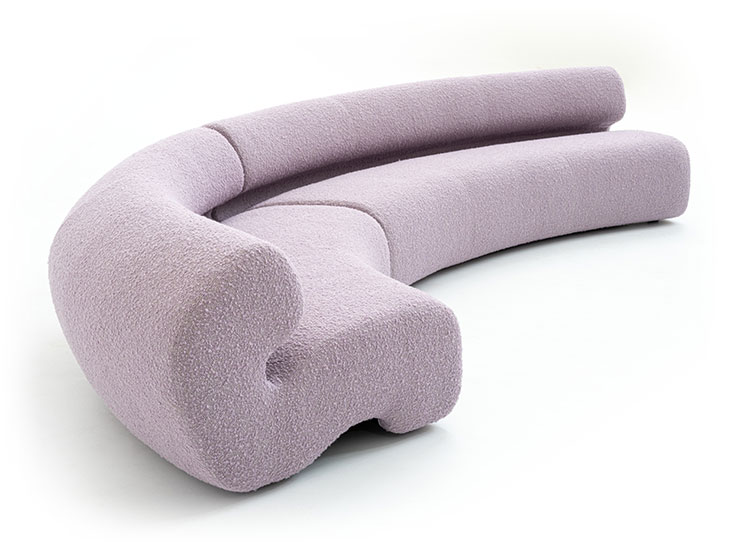
Speaking of creativity, there’s been a lot of discussion about the roles of sustainability and AI in design. What are your thoughts on how these concepts are shaping the future of design? – Ah, the two things you put together, Zarko! Just sustainability and AI. [laughs] Sustainability must be at the core of any process. I believe this concept, or this kind of thinking, must absolutely intersect with everything. When working with anyone, the conversation should always revolve around how we can approach our processes in a more circular way—how we use materials, how we can regenerate and improve them. It’s already a settled agreement. Here. And I think it’s no longer a matter of debate—you have to. At the same time, AI presents a complex argument that is interwoven with our lives. Some say it will give us much more time. I’m not sure if that’s too much. We might get lost because AI might end up doing everything. But I think, since AI may be so intelligent, we need to engage with the unpredictability of the human mind and anything related to its imperfection. These elements lack clear contours—they don’t have well-defined borders. That allows us to rethink and inquire into areas where the borders are undefined, where there’s room to explore even more. A good project is when the limits are not so clearly defined, giving us space to delve into something more. Another thing is exploring this kind of imperfection. But I think the most significant driver in our research has always been our level of imperfection.
We have to focus on imperfection and the doubts that reside within our minds, which are incredibly important.
Are you concerned that AI might eliminate imperfection? – I believe imperfection is a crucial aspect in defining the human level of creativity. You have to embrace your imperfections and your level of bravery. How much are you willing to push boundaries, even if it’s just a little, into a realm where there’s a lot of potential for imperfection?

Maybe material testing or something of that sort could be helpful in the future in that way. – Or to pave the way, because we know it’s a matter of years. They’ve said that in 10 years, AI will reach the level of intelligence as us. And then in another 10 years, they were telling me, I don’t know, by 2030 it’s going to be over. Then it’s not about perfection and intelligence. We have to focus on imperfection and the doubts that reside within our minds, which are incredibly important. That’s what I think, don’t you?
Your design approach often blends profound themes with everyday experiences. How does this reflect in your work and who are your influences? – My approach is deeply rooted in an artistic perspective, which for me, is quite normal. I draw a lot of inspiration from figures like Buñuel, whose work I deeply admire. His ability to weave imperfection and human complexity into his films is something that resonates with me. His films are not just narratives; they are explorations of the surreal, the imperfect, and the deeply human. These themes energize me and my work, pushing me to explore and infuse my designs with similar energy and depth.
Wim Wenders has been very influential for my generation as well. And this is just another example. Didn’t you watch… Wim Wenders? Possibly when I was young, his work was particularly impactful. The 90s were a very strong period for him. I remember when I went to see “Il corso del tempo” (“The Course of Time”) when I was very young. Oh! In black and white.
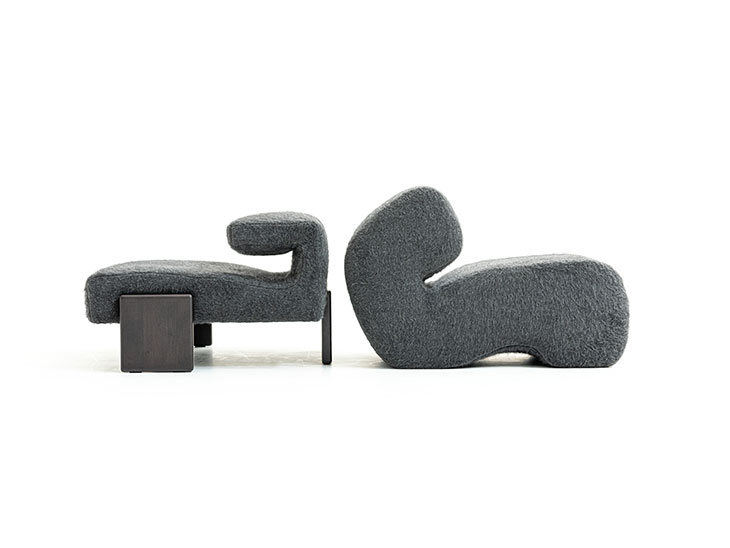
I think you’re never short on inspiration. – Oh, no, no. Truly, we all serve as tools for one another. If you have this mindset, if you’re curious, you understand how essential… We are… Design week has a great aspect. I experienced it this morning. I was with Sabina Marcellis and Bethan Laura Wood, and we had a discussion at the cc-tapis space about women, along with Libby Sellers and Simone LeAmon and Gemma Savio. They were discussing various topics related to women, and one of them shared her experience attending talks at Salone, including one at Prada. She found the week incredibly inspiring because she followed her own path of discussions, with diverse locations available. If you decide on a plan, it’s there. Then there’s a cultural moment for those who seek it, while others may prefer simply enjoying an aperitivo. And that’s good. Perfect, even. Perhaps you need a break from work and to spend a week with an aperitivo in hand. Why not? She emphasized having meaningful conversations and listening to interesting discussions. I hope Salone and its complexity continue to foster energy from people everywhere.
Educate yourself, everyone, and then gather your cultural baggage and explore the things you enjoy. Be critical of what you don’t like. Why not?
I agree. It truly is a central hub of connection. – Yes, yes. Each person needs to figure out how to navigate it. You see, complexity is always a topic we… You always have to find your own simplicity within complexity.
Educate yourself, everyone, and then gather your cultural baggage and explore the things you enjoy. Be critical of what you don’t like. Why not?

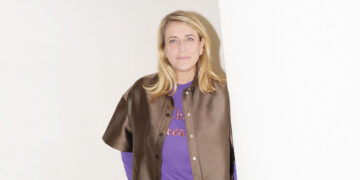













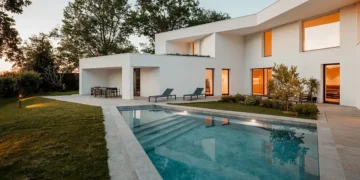
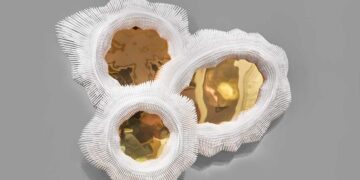
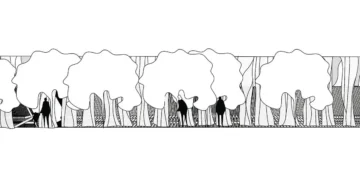



This is a legend, true legend! Bravo DSCENE
genius of design ❤️❤️
the amount of work Patricia has and develops and it looks amazing is astonishing! And I love her friendship with Patrizia Moroso, they produce such beautiful pieces together. I am a total fan!
wow Patricia is such an inspiration and a true icon of architecture and design! We need more women in this business! You should shoot her for your next DSCENE cover! 🙂
she is the hardest working woman in dedign! bravo dscene 😍
what a beautiful interview with urquiola !! 💙💙💙